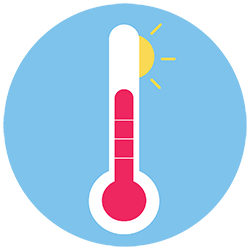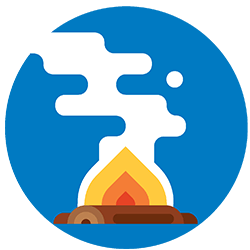Cold, warm, and hot leads: What’s the difference?

Managing and nurturing sales leads successfully can be a challenge. And if you’re in B2B business, you know that leads are your lifeline. Without leads, you don’t have prospects in your pipeline, which is bad for your bottom line.
Every buyer discovers your product or brand differently, so marketing to customers as a single group is like throwing money down the drain. This is why sales leads are segmented into these groups: cold leads, warm leads, and hot leads.
So, what exactly are cold, warm, and hot leads? And what’s the difference between lead types? What marketing tactics can you use to reach these groups? We break it down for you in this article.
What’s the difference between sales lead types?
Cold, warm, and hot leads are segmented based on how close customers are to buying your product, or how likely they are to convert to a sale. Some leads will require less time to convert into sales, while others will take longer to purchase your product.
46% of B2B sales reps list lead quantity and quality as their top challenge. Identifying these groups allows you to allocate marketing efforts properly. If you are pursuing low-qualified leads, the hot ones may move on. If you’re only pursuing hot leads, your pipeline will eventually run dry.

Cold sales leads:
Cold leads are prospects who have shown little to no interest in your brand. They may need your service and are your ideal customer but are unaware of you or the difference between you and your competitors. They aren’t interested in your products or services – yet. It’s up to you to warm them up for a future sale. Building brand awareness is huge at this stage.

Warm sales leads:
Warm leads know about your product and its advantages. However, the purchase isn’t a top priority. They may be researching alternatives or have time to consider their decision. Since warm leads are still in the early stages of the sales cycle, you need to nurture them throughout the buying process.

Hot sales leads:
Hot leads are motivated buyers. They may face external pressures (such as time, market changes, or budgets) and are ready to choose a product that fits their needs. This means you need to take an active approach to close the sale. Just because they are hot doesn’t mean they’ll choose your brand or product. If you slow down, they might choose a competitor.
Marketing to different sales lead segments
We know, we know – every business wants hot leads. But it’s not realistic for every lead to be hot. Think about it this way: if you’re buying a new car, do you purchase the first one you see on the lot? You’ll research options, compare pricing and features, and read reviews before making a purchase.
Your leads will go through a similar buying process. Communicating and marketing to them based on where they are in their buyer journey is crucial.
Cold lead marketing
Don’t disregard or ignore cold leads. Although the journey from turning a cold lead into a hot lead can be long, the end result can be worth the effort for future sales.
With cold leads, your goal is to create demand for your product. Resist the hard sell. These customers aren’t ready to buy, especially if they have never interacted with you before. Instead, focus on building brand awareness and creating a relationship with the customer. Establish yourself as a helpful advisor or industry leader, so that when the prospect is ready to buy, you will be top of mind.
Some ways you can build relationships with cold sales leads:
- Case studies: Social proof that you have helped solve other customers’ problems
- Blogs: Share valuable content that is relevant to customers and address challenges they may have
- Case studies: Social proof that you have helped solve other customers’ problems
- Paid ad campaigns: Boost brand awareness to relevant audiences
Warm lead marketing
Warm leads have shown interest in your product or service. They are looking for solutions and have engaged with your marketing channels, like social media or signed up for your newsletter. With warm leads, you can create an urgency for the purchase. Turn your focus to talking about the product, explaining the benefits and how it will help overcome their challenges.
Some ways you can warm up sales leads:
- Live chat and customer support: Answer questions quickly and provide one-on-one conversations
- Product how-to guides or demos
- Landing page and website visitor tracking: Leverage these groups and advertise to them based on their interests
- Lead magnet ads: Advertise gated content like industry reports, white papers, etc.
- Email drip campaigns: Segment emails and send out relevant content, offering incentives like discounts for first-time buyers
Hot lead marketing
Hot leads are highly interested and are ready to buy. They have shown interest by providing contact information, signing up for content, and engaging with your business. These buyers have the budget, authority, and need for your product. At this stage, you probably won’t need multiple touchpoints to close the sale. However, they can always move on to a competitor – so don’t drop the ball! Keep hot leads top of mind by creating a timeline and thorough schedule for final steps.
Keep in touch with hot leads until the transaction is completed. Once a lead converts, don’t forget about them. They could always recommend you or be a repeat customer in the future.
Make the most of your marketing leads
Classifying leads is an important part of the sales process. Knowing the difference between lead types is required to do it right. If you’re not segmenting leads, you could be wasting time and money chasing down the wrong customers with the wrong tactics. This requires a little more organization and management up front but will pay off in the end. View every lead as an opportunity and start building relationships.


